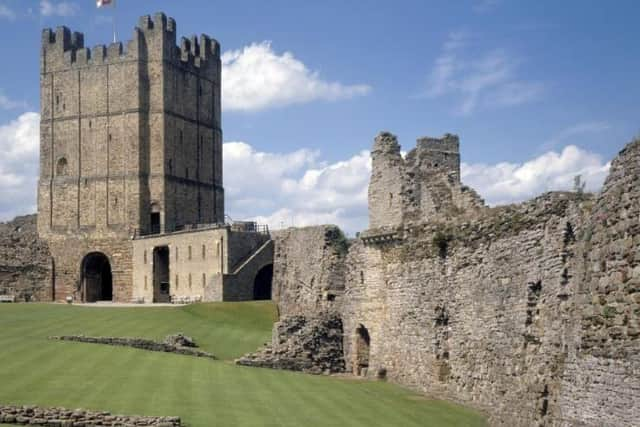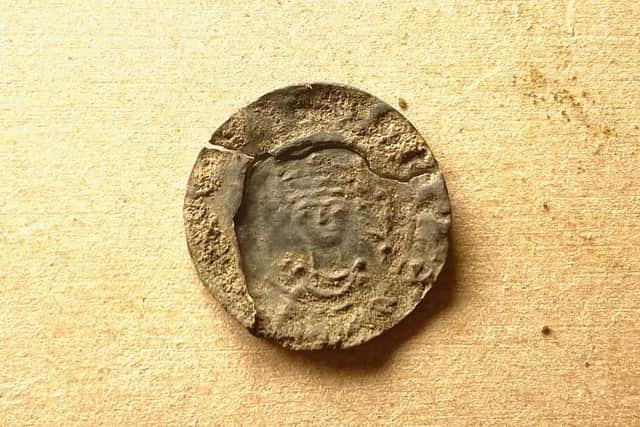Archaeological dig at Richmond Castle reveals forgotten entrance and silver penny from William the Conqueror's reign
Solstice Heritage and the Castle Studies Trust are leading an excavation at the English Heritage-owned site which will feature in the BBC Four history series Digging for Britain later this year.
The castle dates back to the 11th century, when it was built in the aftermath of the Norman invasion of England, and the keep was added to the complex in the 1200s. Although it later fell into ruin, the site was taken over by an army militia in the Victorian period and remained a military base until the 1920s. It housed imprisoned conscientious objectors during World War One.
Advertisement
Hide AdAdvertisement
Hide AdExcavation director Jim Brightman welcomed Digging for Britain presenter Professor Alice Roberts and her film crew to the castle last week and also shared some details of the finds that have been identified from several trenches on the Castle Studies Trust blog.


One of the most important is a silver penny displaying the head of William the Conqueror, suggesting it was minted in the immediate aftermath of the conquest when Richmond had already become an important stronghold and was in the hands of his ally Alan Rufus following the Harrying of the North.
The team are exploring how the finds relate to Richmond's strategic importance at the time, and a selection of medieval pottery uncovered includes evidence that desirable items were imported from France and Belgium and used in the castle's living accommodation alongside the work of local potters.
Animal bones bearing signs of butchery will be studied for clues about Norman diets, and archaeologists are speculating about the use of a number of limestone slabs similar to a traditional Dales farmyard which they believe were part of a medieval building.
Advertisement
Hide AdAdvertisement
Hide AdThey have also discovered the remains of a postern gate that had been blocked off several centuries ago.


Some more recent discoveries include the drainage system for the military parade ground in the 19th and early 20th centuries, and a number of graphite pencils thought to have been used by soldiers training at the barracks in the 1900s. The barracks itself were demolished in 1931.
Comment Guidelines
National World encourages reader discussion on our stories. User feedback, insights and back-and-forth exchanges add a rich layer of context to reporting. Please review our Community Guidelines before commenting.